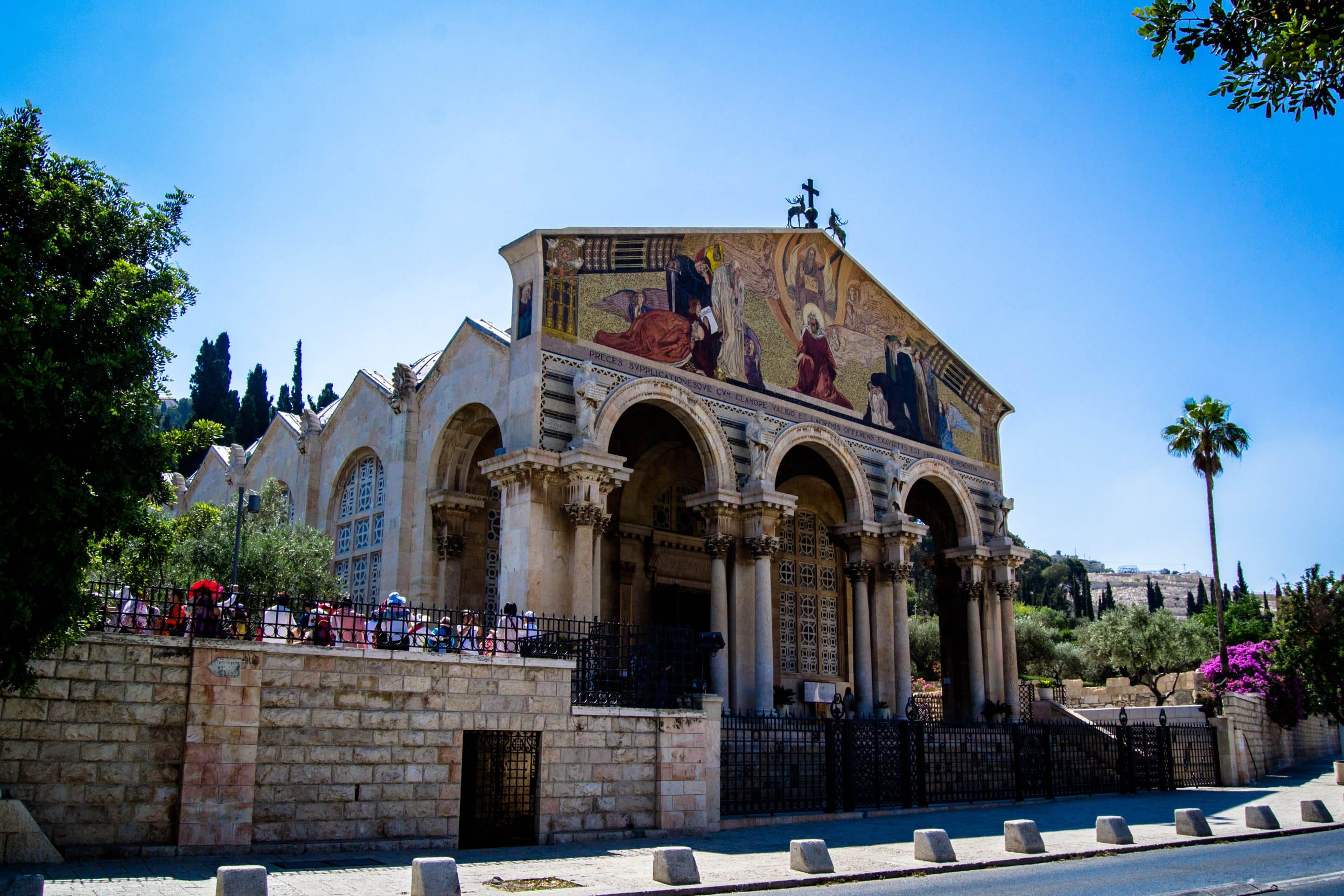
Gethsemane – Mount of Olives: the garden, the basilica and the grotto The landmarks of the Passion
The Gethsemane compound, with the garden of the Agony, the Basilica and the grotto, it’s one of the most significant holy places in the Holy Land. To walk through it, means to walk through the Gospel.
John it’s clear about the fact that this is the place where Christ’s Passion, well described by Mark as one of the most human moments of Jesus’ life, a moment of doubt, rebellion and, finally, full acceptance of his destiny, bega
Walk with us along Jesus’ steps towards the Resurrection. Get lost in the beauty of the Church of the Nations and find out where Mary’s tomb really is
THE MOUNT OF OLIVES
Unbothered by the claxons, the traffic jam and the annoying noises, the multicenturied olive trees are observing the valley of Cedron, Jerusalem’s walls and the Golden Gate, the only entrance directly leading to Al-Aqsa compound that has been closed since the medieval times.
According to the Christian tradition, it is from this door that Jesus entered triumphant in Jerusalem during Palm’Sunday. Jewish people, instead, are still waiting for the Messiah to enter through this door For Muslims the opening of the gate will signal the beginning of the end of the world
Gethsemane’s olive trees are totally indifferent to prophecies and the bustle: their roots are firmly anchored to history. Dated to the 12th Century, the Crusaders’ times, they all share the same DNA, meaning that they all come from the same original tree, the one venerated by the first Christians as it was connected to the Agony of Jesus. .
Recent studies of the Nation Research Centre of Florence, Italy, found out that the olive trees, with their 800 plus years, are surprisingly healthy and absolutely not damaged from the city’s pollution.
Another curious fact: there is a smaller tree in the garden. It is an olive tree gifted to the Gethsemane by Pope Paul VI in 1964 during his first visit to the Holy Land.
THE GETHSEMANE
There is truly something special about this place nested on the hillside of Mount of Olives, not far from the Old City. We are now at the Gethsemane, a plot of land where Jesus went to pray after the Last Supper. Here is where the kiss of Judas episode took place, where Jesus was arrested by those intending to crucifix him.
There are no doubts about this place being the same described by the Gospel. Where now lays the garden, the Basilica of the Nations and the grotto where Mary was entombed in, Jesus had to face the brutality of his destiny.
The toponomastica – or the meaning of a place name – of Gethsemane comes from “gath shemanim”, the hebrew word for “olive press” The presence of the olive trees all round, attested by archaeologists from the 2nd Century BC, futherly confirms that this is the place described by the Gospel.
John also remarks that Judas had no doubts he could find Jesus praying here. The main connection between the Messiah and this place lies in the fact that he was a very good friend of the family owning the land. The main connection between the Messiah and this place lies in the fact that he was a very good friend of the family owning the land.
THE GROTTO OF THE OLIVES AND THE TOMB OF MARY
In the compound, that belongs to the franciscan friars since 1666, there is a grotto where Jesus, at the time in Jerusalem to honour the Easter festivities, was staying in with his disciples.
Judas led the soldiers to the grotto, a natural cave a little more than 3 metres high, with no hesitation.
In front of it there is the Tomb of Mary. Similar in conformation to the Holy Sepulchre, it has been excavated from the rock and then monumentalized with an aedicula. It is now the heart of the crusaders’ church.
Climbing down 47 steps, you’ll end up in the crypt partially carved from the rock and partially walled up: this is the tomb of Mary. Recently, the altar slab was lifted up and the original rockbed, heavily pierced to retrieve relics, could be seen for the first time in centuries.
The Franciscan archaeologist Bagatti led some excavations in the 70s that confirmed how the tomb was part of a far more extended necropolis, another fact that makes it similar to Jesus’ tomb on the Mount of Golgotha.
THE BASILICA OF THE NATIONS
It is now time to get back to the surface and visit the Basilica of the Nations that derives its name from the huge international fundraising effort, made by the USA as well, that allowed the architect Antonio Barluzzi to build 12 domes and 3 apsises.
The modern church was built on the ruins of the byzantine church founded by the emperor Theodosius I in 385 AC. The first church was rebuilt by crusaders and dedicated to the Saviour. It was also destroyed by Saladin. It definitely has a long troubled history.
Consecrated in 1924, the Basilica is most famous for the stone of the Agony It is on this stone slab that Jesus prayed and sweated blood asking the Lord to get away from him the goblet representing Death and the Passion..
It is impossible not to notice it in the semi-darkness of the tabernacle. One of the peculiarities of the church is the atmosphere recalling the dark night of Judas’ betrayal and Jesus’ arrest.
The vault of the church is decorated with a starry night, palms and olive branches: it’s like the garden is stretching inside the building
The Agony of Christ is almost tangible and taking the time to be present to oneself is a must do. Outside the chaotic life of Jerusalem, and the world, awaits.